Kaohsiung’s National Sun Yat-sen University (國立中山大學) has one of the most idyllic settings of any university in Taiwan. Away from the bustling city center on the far side of Monkey Mountain, also known as Chaishan (柴山) and Shoushan (壽山), the buildings in this tranquil setting are blessed with unobstructed views of Kaohsiung Harbor and the Taiwan Strait, not to mention glorious sunsets. In fact, this area was so beautiful that former president Chiang Kai-Shek (蔣介石) established a villa here for his personal use, preventing the average citizen from entering the area for decades.
After his passing in 1975, the Kaohsiung City Government began developing the area for recreation, re-establishing the swimming beach from the Japanese days, and setting up a zoo nearby, among other improvements. With the establishment of the university in 1980, the zoo animals had to be moved up the mountain, but sports facilities were then added to the list of reasons for people to visit the area. Chiang’s Villa has even been opened as a tourist attraction.
Behind the university campus, however, one narrow paved road continues to wind its way farther and farther away from the city center, parallel to but high above the shoreline. Eventually, the road dead-ends at a military checkpoint. Tucked away in this isolated corner of Kaohsiung just before the checkpoint is Chaishan Village (柴山部落), an eclectic mix of residences, farms, cafes and temples, first populated centuries ago by Aborigines and later Han immigrants.
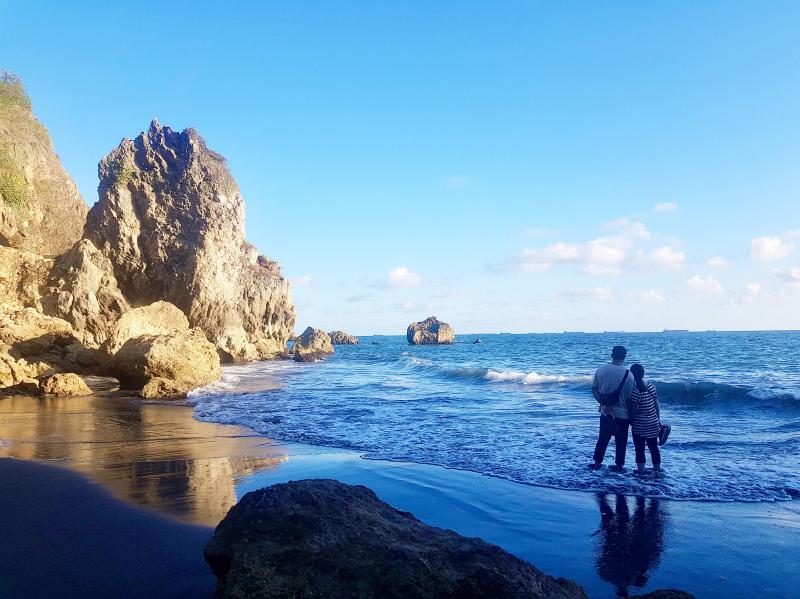
Photo: Tyler Cottenie
THE CHAISHAN COASTLINE
The Chaishan Alangyi trail takes visitors from the edge of the university campus down to the far end of this settlement, all along the shoreline. Like its namesake in Pingtung County, the Alangyi Historic Trail (阿朗壹古道), this trail follows relatively unspoiled coastline from one trailhead to an exit elsewhere. Also like its namesake, it is very exposed and best hiked in the winter, or at the very least not during the midday heat. Unlike its namesake, this trail is entirely unofficial, unmaintained and unregulated: No permits or guide are needed, but proceed at your own risk.
Just after the last university building, there is a trail behind a chain link fence on the left side of the main road that descends to a large sandy beach. This “Secret Beach,” as it is commonly known among locals, is a favorite spot for sunbathing, socializing and swimming. “No swimming” signs are posted (sporadically enforced and consistently ignored) and deaths have occurred here when the sea gets rough. For those uncomfortable with the water or the lack of supervision, the beach is nevertheless a fine place to while away an afternoon, with the greenery of the mountain at your back and the blue of the sea in front of you. There is even a natural cold spring here, allowing visitors to rinse off sand and salt before heading home. This beach is nice enough that it may entice some would-be trail walkers to abandon their plans and settle down for a day in the sun. Few would regret such a choice.
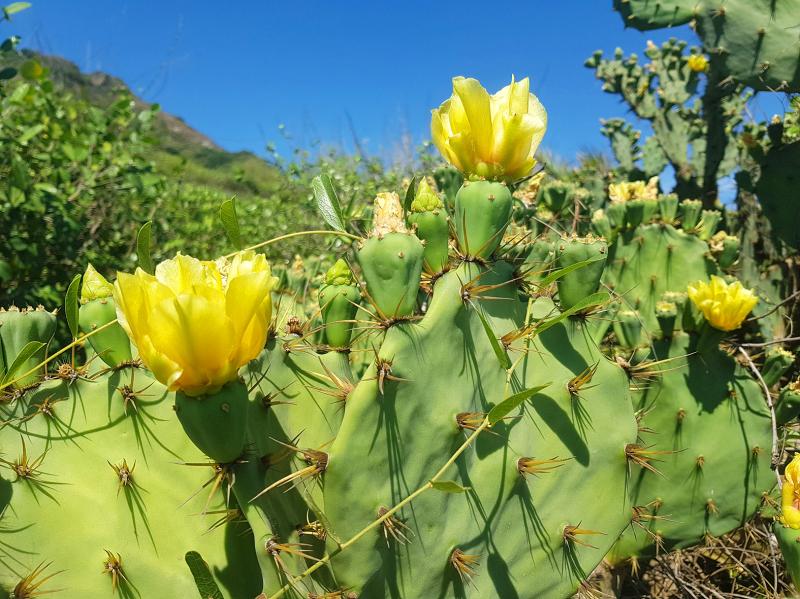
Photo: Tyler Cottenie
For those who wish to continue, head north along the coast. The trail alternates between sharp coral rock (wear good walking shoes with a hard sole), loose gravel and sand. At high tide, careful footing is needed to hop from stone to stone in a few places, but the trail is mainly on dry ground.
Along the way, the trail passes an abandoned pillbox, a concrete reminder that this entire mountain from peak to shoreline was once a protected military area. Surrounding this pillbox is a healthy community of cacti, decorated with yellow flowers and red fruit, thriving in Kaohsiung’s hot sun. Grab a photo in, on or around this military relic, and grab some shade inside if the weather is hot: the remainder of the trail is quite exposed. Don’t forget to bring plenty of water when planning a walk on this trail.
Speaking of things being exposed, visitors to the next part of the trail may be in for a surprise. North of the pillbox is another long section of black sandy beach. This is the real “Secret Beach,” according to many. With a half-hour walk in required from either side, some feel this affords them enough privacy to go ahead and expose parts of their body that they wouldn’t on any other beach. Indeed, this is Kaohsiung’s very own (unofficial) nude beach. Due to the heavier traffic in recent years from people walking the Chaishan Alangyi, this practice is not as common as it once was, but it has far from disappeared.
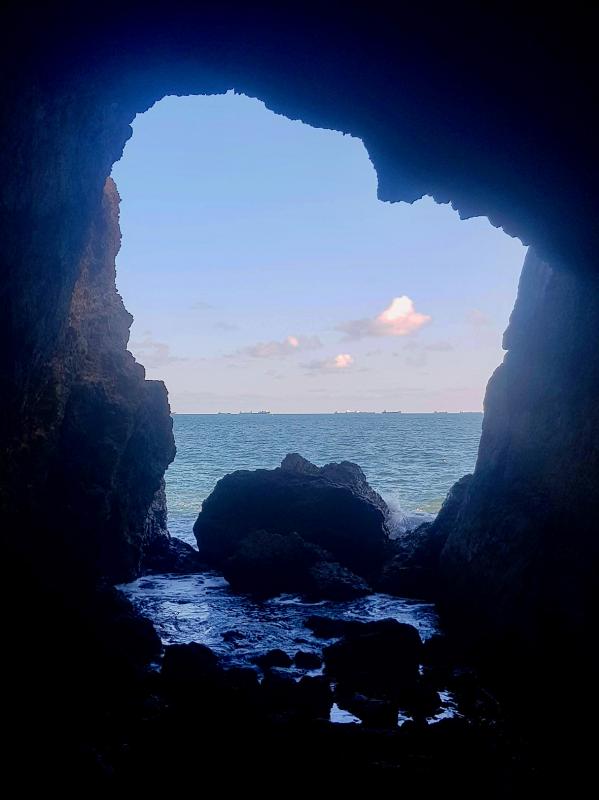
Photo: Tyler Cottenie
HUMAN SETTLEMENT
Continuing north, the trail passes a perfectly eroded vertical wall of yellow soil before reaching another perfectly vertical wall, this time made of concrete. This retaining wall marks your arrival at the Chaishan Fishing Pier. Just ahead, there are concrete tetrapods protecting the small harbor from erosion. Pipe rafts and fishing paraphernalia are scattered on the beach, indicating a small but still active fishing community.
Many walkers call it quits here and head back up to the main road through the village. There is a mix of abandoned, semi-abandoned and well-maintained buildings here, but nothing much in the way of new structures. Property rights exist in a legal gray area here, with the land under lease from the government, not owned and new construction not technically allowed. This, coupled with the fact that the whole mountain is sliding downhill at a rate of around 10 cm per year in places, makes it an unattractive location for development. Still, there are a number of restaurants and coffee shops in the area with expansive patios and fantastic ocean views. Enjoying an ice-cold beverage while watching the sunset is a great way to end a hike on the Chaishan Alangyi.
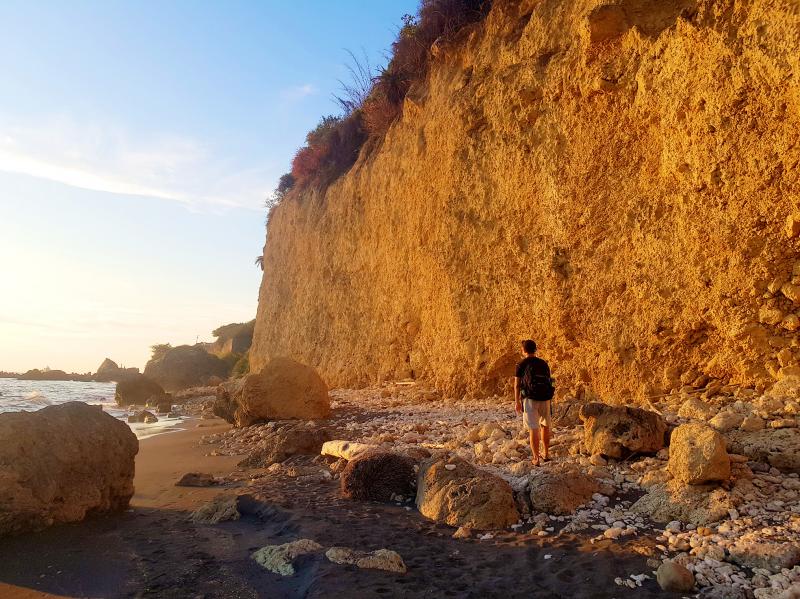
Photo: Tyler Cottenie
The village is a common ending (or starting) point for the hike, but it is also possible to stay on the shoreline and continue further north. The coastal path goes through a large field of tetrapods half-buried in the soil, protecting a military facility up the hill, before arriving at another black sand beach, the most private one of all. A vertical wall of rock at the north end of the beach makes for a definitive end to the trail, while a small trail uphill from the south end of the beach gives access to a paved road above. Follow this up to a T-intersection, and turn right to reach the main road.
There is one final location that is not connected to the Chaishan Alangyi but deserves honorable mention. Turning left instead of right at the T-intersection mentioned above and going downhill, one can reach the coast on a paved road. This location, known unofficially as Dazihran (大自然, meaning “nature” or “the great outdoors”) is a favorite getaway for Sun Yat-sen University students. It features a cafe with ocean views, a pillbox that has fallen into the ocean, a small hill with a trail to the top and an Instagram hot spot: a tunnel eroded through this hill by the ocean (access behind a fence once again). It is a nice bonus destination at the end of a walk along the Chaishan Alangyi.
Getting In and Out

Photo: Tyler Cottenie
From the Sizihwan MRT stop, take Bus 99 to the College of Liberal Arts stop (southern trailhead) or the Shanhai Temple stop (village trailhead). If exiting the trail at the northernmost trailhead, walk south 300m along the main road to reach the first bus stop for Bus 99. Walking between southern and northern trailheads takes 30 minutes on the main road and 1.5 hours along the coast.
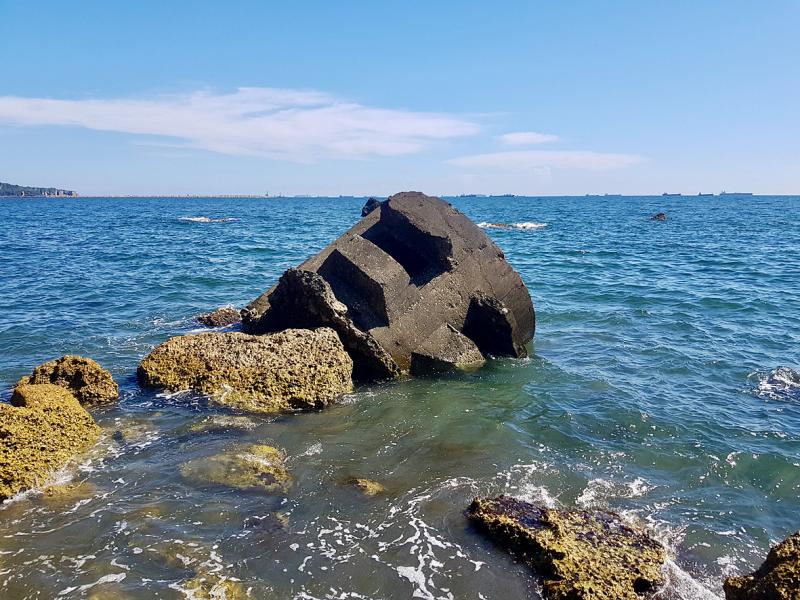
Photo: Tyler Cottenie
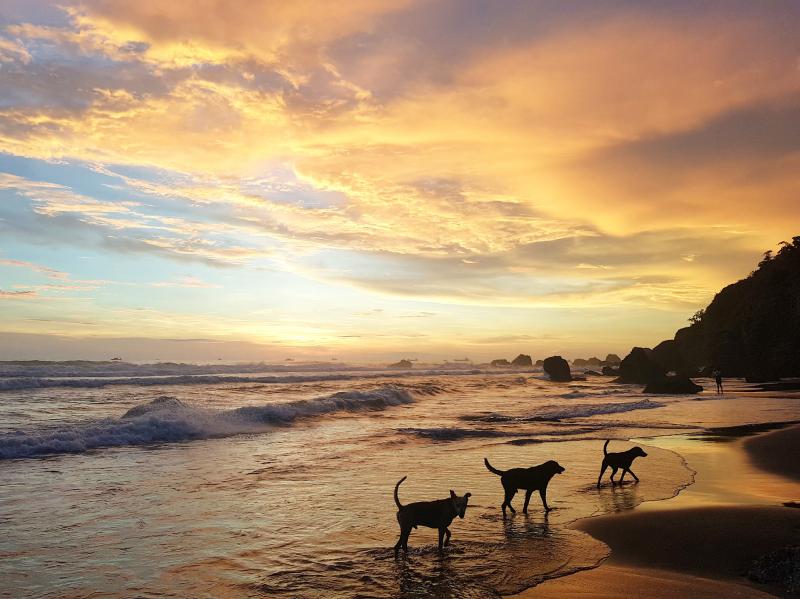
Photo: Tyler Cottenie
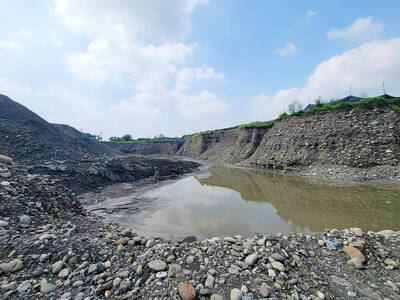
Last week the story of the giant illegal crater dug in Kaohsiung’s Meinong District (美濃) emerged into the public consciousness. The site was used for sand and gravel extraction, and then filled with construction waste. Locals referred to it sardonically as the “Meinong Grand Canyon,” according to media reports, because it was 2 hectares in length and 10 meters deep. The land involved included both state-owned and local farm land. Local media said that the site had generated NT$300 million in profits, against fines of a few million and the loss of some excavators. OFFICIAL CORRUPTION? The site had been seized
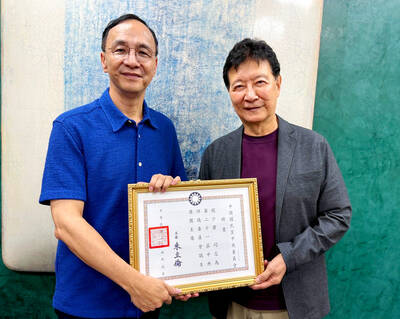
Next week, candidates will officially register to run for chair of the Chinese Nationalist Party (KMT). By the end of Friday, we will know who has registered for the Oct. 18 election. The number of declared candidates has been fluctuating daily. Some candidates registering may be disqualified, so the final list may be in flux for weeks. The list of likely candidates ranges from deep blue to deeper blue to deepest blue, bordering on red (pro-Chinese Communist Party, CCP). Unless current Chairman Eric Chu (朱立倫) can be convinced to run for re-election, the party looks likely to shift towards more hardline
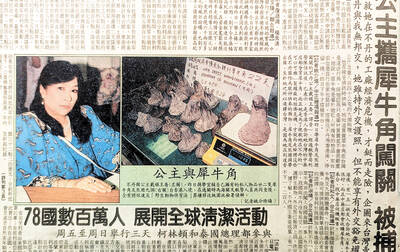
Sept. 15 to Sept. 21 A Bhutanese princess caught at Taoyuan Airport with 22 rhino horns — worth about NT$31 million today — might have been just another curious front-page story. But the Sept. 17, 1993 incident came at a sensitive moment. Taiwan, dubbed “Die-wan” by the British conservationist group Environmental Investigation Agency (EIA), was under international fire for being a major hub for rhino horn. Just 10 days earlier, US secretary of the interior Bruce Babbitt had recommended sanctions against Taiwan for its “failure to end its participation in rhinoceros horn trade.” Even though Taiwan had restricted imports since 1985 and enacted
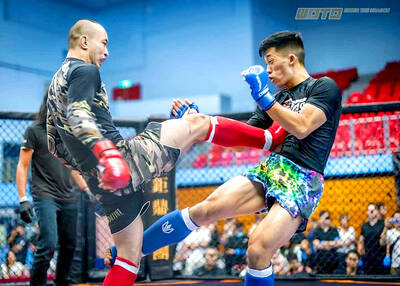
Enter the Dragon 13 will bring Taiwan’s first taste of Dirty Boxing Sunday at Taipei Gymnasium, one highlight of a mixed-rules card blending new formats with traditional MMA. The undercard starts at 10:30am, with the main card beginning at 4pm. Tickets are NT$1,200. Dirty Boxing is a US-born ruleset popularized by fighters Mike Perry and Jon Jones as an alternative to boxing. The format has gained traction overseas, with its inaugural championship streamed free to millions on YouTube, Facebook and Instagram. Taiwan’s version allows punches and elbows with clinch striking, but bans kicks, knees and takedowns. The rules are stricter than the